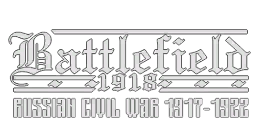| Battle of Baghdad | |
|---|---|

| |
| General information | |
| Date | 10-11 March 1917 |
| Theatre | Middle East Theatre (Mesopotamian Campaign) |
| Belligerents | |
| Game Type | Conquest |
| Style | Landing |
| Flags | Baghdad Palace Baghdad East Baghdad Mosque Baghdad Outskirts South Ottoman Defend Lines West Ottoman Defend Lines East |
Historical info[]
After the surrender of the Kut garrison on 29 April 1916, the British Army in Mesopotamia underwent a major overhaul. A new commander, Lieutenant General Sir Frederick Stanley Maude was given the job of restoring Britain's military reputation. General Maude spent the rest of 1916 rebuilding his army. Most of his troops were recruited in India and then sent by sea to Basra. While these troops were being trained, British military engineers built a field railway from the coast up to Basra and beyond. General Maude also obtained a small force of armed river boats and river supply ships.
After recapturing Al-Kut on 24th February 1917, British forces marched further and reached Ottoman defensive line just south of Baghdad, at confluence of Diyala and Tigris rivers. Turks were seating in strong defensive positions across the river, so British decided to hold a distracting move of taking most of the army to the north. Ottomans had to respond and also led all of their army, except one squad, to the north. After that, British started unexpected assault on original defences on 10th March and rapidly crushed Ottoman defenders. The situation started to going out of Turkish control and British forces captured Baghdad without any battle on the next day, 11th March 1917.
Description[]
The map follows real terrain of Baghdad outskirts and divides the map on 2 parts with Diyala river. Only British have uncapturable base, and it is the only flag located on East bank of the river, behind slight hills. There are a few pontoons connecting two shores, all leading straight into Ottoman trenches. Turks initially control all 6 capturable flags - 3 outside the city, in the trenches, and 3 inside city walls. Both teams have to hold any 4 flags to bleed the enemy. British have some tanks and mortars for the assault, while Turks only have static weapons - cannons, MGs, mortars. Unlike in reality, after capturing Ottoman defences outside city the battle does not end, but instead continues inside Baghdad, as half of the flags are inside.





